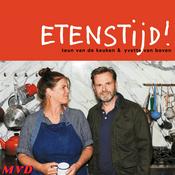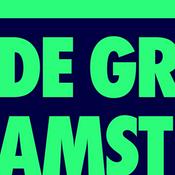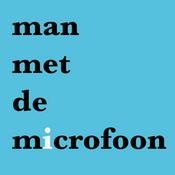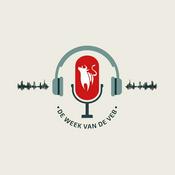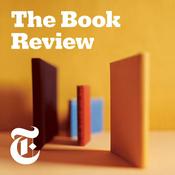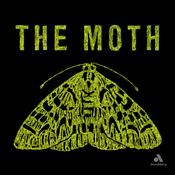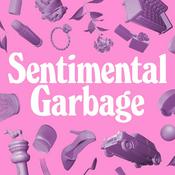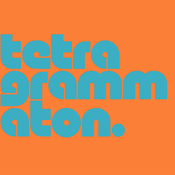117 afleveringen

Alan Michelson Talks Dinosaurs, Murderous US Presidents, and Platinum-Gilded Native “Knowledge Keepers”
03-6-2025 | 52 Min.
As a child, Alan Michelson often rode the T past sculptor Cyrus Edward Dallin’s “Appeal to the Great Spirit” (1908) outside the Museum of Fine Arts, Boston (MFA). He was riveted by the statue’s grand horse and the powerful yet melancholy figure wearing a striking Plains Indian war bonnet. It was only in his 20s that the artist learned that he had been separated through adoption from his own Native heritage and Mohawk birth family in the Six Nations of the Grand River in Ontario, Canada. He soon learned that the Dallin sculpture he marveled at in childhood symbolized the nefarious “Vanishing Indian” myth, which cast Indigenous peoples as doomed to extinction. Last year, after four decades of reconnection with his Indigenous community, deep historical research, and the development of a highly acclaimed practice in video, installation, and public art, Michelson returned to the MFA to install his answer to the 1908 sculpture: two platinum-guilded bronze sculptures of living Native leaders who are Indigenous to the land now known as Boston. The gleaming forms of Aquinnah Wampanoag artist and activist Julia Marden and Nipmuc artist Andre StrongBearHeart Gaines Jr. stand proudly on the two large plinths on either side of the MFA’s entrance, resolutely toppling the myth that Indigenous peoples have disappeared from this land and honoring the vitality of Native communities today.In this episode of the Hyperallergic Podcast, Michelson joins Editor-in-Chief Hrag Vartanian to discuss the process and inspiration behind this pair of works, titled “The Knowledge Keepers” (2024). They also discuss the dinosaur tracks on Mt. Holyoke that inspired the artist as a child, the reasons George Washington is known as a “Town Destroyer” in many Native languages, and how Michelson sees the land as a silent witness to history. We also talk with Ian Alteveer, the chair of Contemporary Art at MFA Boston, who walks us through the fascinating process behind “The Knowledge Keepers,” which is the inaugural installation in a series of monuments that will greet visitors at the museum’s main entrance. Subscribe to Hyperallergic on Apple Podcasts and anywhere else you listen to podcasts. Watch the complete video of the conversation with images of the artworks on YouTube. Support this podcast and our journalism as a Hyperallergic Member.https://hyperallergic.com/membership

The French Lesbian Curator & Spy Who Saved Art from the Nazis
21-5-2025 | 41 Min.
When World War II broke out, museums across France took their most precious artworks off the walls and hid them away for safekeeping from bombing. But no one suspected the greatest threat to these treasures: the Nazis’ massive art looting scheme, wherein they sought to plunder museums to bolster the image of their own galleries, take modernist (or, in their words, “degenerate”) art down from view, and disenfranchise Jewish art collectors — while raking in money for themselves along the way. When Nazis began storing stolen pieces in the Jeu de Paume museum in Paris, none of them realized that the building’s petite, bookish curator understood German. Throughout their occupation of Paris, curator and art historian Rose Valland was taking detailed notes of their crimes, and in the process, saved scores of masterpieces that otherwise may have been lost forever.Although Valland published a popular account of her daring deeds after the war (part of which was turned into a Hollywood film), there is still so much that the world doesn’t know about this underappreciated French Resistance hero. But this month, after years spent diving into archives, uncovering long-lost journals, and even talking with Valland’s family members, author Michelle Young published stunning new revelations about this remarkable woman’s life in a new book titled The Art Spy. In this episode of the Hyperallergic Podcast, Young joins Editor-in-Chief Hrag Vartanian to discuss the story, from the identity Valland kept quiet as a queer woman and her accounts of seeing paintings burned in the courtyard of the Jeu de Paume, which were initially met with disbelief, to her daring escape on a flatboat on the Seine.Buy The Art Spy on bookshop.org, and read an excerpt on Hyperallergic. Also, check out Michelle Young’s recent article on Hyperallergic that tells the story of her visit with the descendent of a family victimized by Nazi art looting. Subscribe to Hyperallergic on Apple Podcasts and anywhere else you listen to podcasts. Watch the complete video of the conversation with images of the artworks on YouTube. Support this podcast and our journalism as a Hyperallergic Member.https://hyperallergic.com/membership

Ancient Art, Wages, and Strikes: A 3000-Year-Old History of Labor
06-5-2025 | 48 Min.
At Hyperallergic, we take pride in covering protesting museum workers who take to the streets. But few realize that these workers are taking part in a practice that’s as old as some of the ancient artifacts in their institutions. In this episode of the Hyperallergic Podcast, we’re joined by professor, public historian, and Hyperallergic contributor Sarah E. Bond, who shares her knowledge on labor organizing in the ancient world, which stretches back to the earliest recorded strike, which took place in 1157 BCE in the Ancient Egyptian artisan’s village of Deir el-Medina. We learn that it’s not just the overwhelmingly White and male field of Classics that is to blame for the lack of attention paid to the everyday workers of Ancient Egypt and Rome, but also the fact that the very authors they study, who tended to be extremely wealthy, often recorded striking workers as “rioters.” As Bond recently wrote, new studies are showing that the great artistic accomplishments and economic abundance of the ancient world were “heavily reliant on the collective contributions of the millions of enslaved persons laboring across the Mediterranean” — in fact, 20–25% of the Roman population at the height of the Roman Empire was enslaved. Some of America’s founding fathers would even quote philosophers like Aristotle, who supported this system, as justification for continuing slavery themselves. Bond joins Editor-in-Chief Hrag Vartanian to talk about the stories that fill her new book, Strike: Labor, Unions, and Resistance in the Roman Empire, from women textile workers staging a walkout in Ancient Egypt, to the emperor and empress who slaughter tens of thousands of protesters in the Constantinople hippodrome — and even how Mark Zuckerberg’s obsession with Ancient Roman stoicism (or rather, “bro-icism”) informs technocrats’ inhuman sense of the value of human labor.Subscribe to Hyperallergic on Apple Podcasts and anywhere else you listen to podcasts. Watch the complete video of the conversation with images of the artworks on YouTube.Read more by Sarah Bond on Hyperallergic.Support this podcast and our journalism as a Hyperallergic Member. https://hyperallergic.com/membership

Lady Pink, the Queen of New York City Graffiti
22-4-2025 | 1 u. 34 Min.
In 1971, a seven-year-old Sandra Fabara moved with her family from a city nestled in an Ecuadorian rainforest to the dense brick landscape of Brooklyn. By the time she was a teenager, she had gone from climbing trees to hopping the fences of the MTA train yards. Soon, she was known as the queen of New York City graffiti: the one and only Lady Pink. If you’re as mesmerized by the 1970s and ’80s world of New York City graffiti as we are, then you’ve seen her before, immortalized in classic photos by Martha Cooper and as one of the stars of Charlie Ahearn’s classic feature film Wild Style (1983). In what appeared to be an almost exclusively male scene, these images showed Lady Pink holding her own as one of the few women recognized for their contributions to the golden age of graffiti writing. While she is adamant that she was not the first female graffiti artist — she credits others like Barbara 62, Eva 62, and Charmin 65, who she says “ got up more than most guys did,” even if those guys were “not willing to admit” it — she was one of the only women able to continue her career above ground in the gallery world. Today, her early memories of playing in the rainforests, which include killing a snake at the tender age of five, meld with the curves of her graffiti lettering and her inspirations from Antoni Gaudí, Hayao Miyazaki, and Frank Frazetta, to create uniquely fantastical worlds that perfectly depict the idea of an “urban jungle.” In this episode of the Hyperallergic Podcast, Lady Pink sat down with our Editor-in-Chief Hrag Vartanian in our Brooklyn offices, just a few blocks away from her childhood home. They discuss everything from what it was like to be a woman in the graffiti world and her collaborations with artists like Jenny Holzer and Jean-Michel Basquiat to her relationship with graffiti legend Lee Quiñones, tracing her journey from train yards to galleries, mural walls, and museums, inspiring countless young women artists across continents. You can see some of her work on display now in Above Ground: Art from the Martin Wong Graffiti Collection at the Museum of the City of New York through August 10, 2025. Subscribe to Hyperallergic on Apple Podcasts and anywhere else you listen to podcasts. Watch the complete video of the conversation with images of the artworks on YouTube.

Street Stories: Graffiti and the Legacy of Martin Wong
10-4-2025 | 48 Min.
The Museum of the City of New York (MCNY) holds what is arguably the most important collection of early graffiti art and ephemera, amassed by Martin Wong, a queer Chinese-American self-taught painter who wore cowboy hats and, for a time, paid for his lodging in a dingy Lower East Side hotel room by working as a night porter. Drawn to the bustling art scene of late 1970s New York, Wong developed a tight network of friends in what may have seemed like an unexpected community at the time: graffiti writers, who would eventually be recognized as creating an entirely new style of art, emulated in every corner of the globe. At a time when society reviled graffiti artists as petty criminals, Wong began collecting their drawings, sketchbooks (or “blackbooks”), and eventually, paintings on canvas. He also painted moving,intimate portraits of the artists themselves. This was just one avenue he explored in his sprawling body of work, which ranges from detailed urbanscapes bustling with the life of the city, to surreal ceramics and scrolls influenced by traditional Chinese calligraphy. Before his death due to complications related to AIDS in the 1990s, Wong donated his beloved graffiti collection to the MCNY. Many of its prized pieces by renowned graffiti artists including Futura 2000, Keith Haring, Lady Pink, Rammelzee, DAZE, and others are on view now in the exhibition Above Ground: Art from the Martin Wong Graffiti Collection. This episode of the Hyperallergic Podcast was recorded during a live panel at the MCNY on March 10 celebrating Wong’s collection and life. Hyperallergic Editor-in-Chief Hrag Vartanian moderated the discussion between Wong’s longtime friend and roommate Lee Quiñones, PPOW Gallery Co-Founder Wendy Osloff, and curator Sean Corcoran, who organized the exhibition. In front of a crowd of some 100 Hyperallergic Members and their friends, the panelists shared stories of the singular artist, his love of collecting, and his extravagant storytelling. As Quiñones recalls, Wong once said, “Don’t let the truth get in the way of a good story.” Above Ground: Art from the Martin Wong Graffiti Collection continues at the Museum of the City of New York (1220 Fifth Avenue, Upper East Side, Manhattan) through August 10. Subscribe to Hyperallergic on Apple Podcasts, and anywhere you listen to podcasts. This episode is also available with images of the artwork on YouTube.—Subscribe to Hyperallergic NewslettersThis podcast is made possible by the support of our members. Join us today at hyperallergic.com/membership.
Meer Kunst podcasts
Trending Kunst -podcasts
Over Hyperallergic
Luister naar Hyperallergic, Boeken FM en vele andere podcasts van over de hele wereld met de radio.net-app

Ontvang de gratis radio.net app
- Zenders en podcasts om te bookmarken
- Streamen via Wi-Fi of Bluetooth
- Ondersteunt Carplay & Android Auto
- Veel andere app-functies
Ontvang de gratis radio.net app
- Zenders en podcasts om te bookmarken
- Streamen via Wi-Fi of Bluetooth
- Ondersteunt Carplay & Android Auto
- Veel andere app-functies
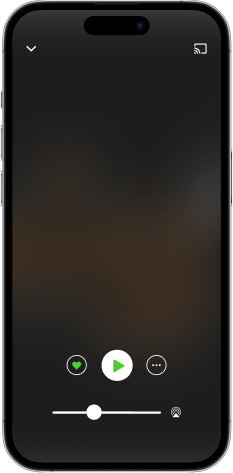

Hyperallergic
download de app,
luisteren.



